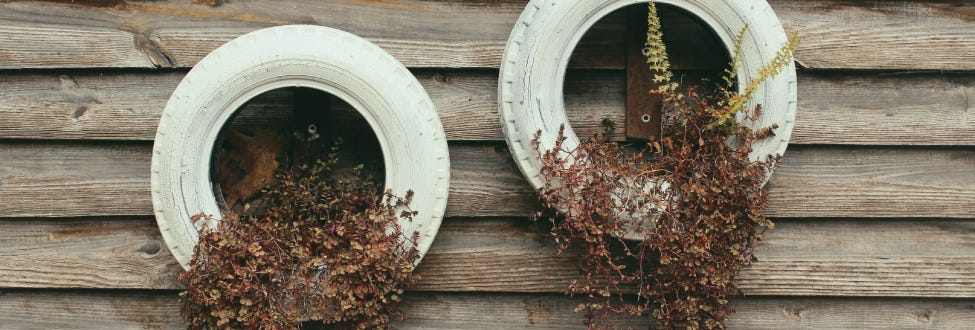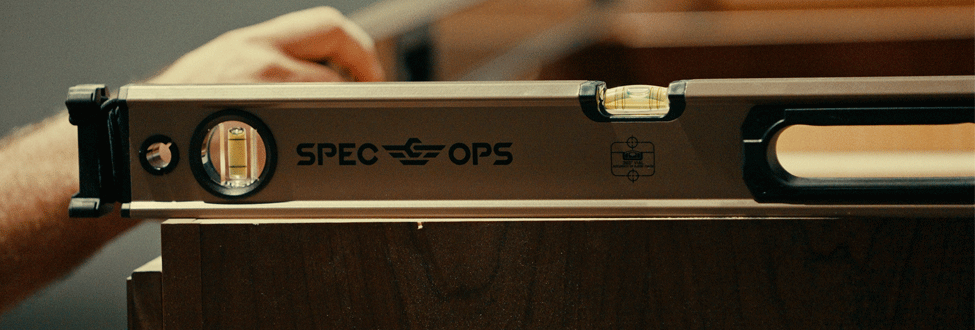How to Keep Your DIY Projects Sustainable
- May 7, 2020

How to live more sustainably is gradually becoming an important topic for many homeowners. Additionally, do-it-yourself projects (DIYs) and tools are only growing in popularity among homeowners, as a creative outlet and a money-saving strategy. But project waste can be a serious drawback for some homeowners when considering home improvement projects. So, if you or your client is looking to spruce up a space while reducing waste footprint, check out these six sustainable DIY project tips.
Upcycle
Similar to recycling, “upcycling” is when you take an item that you have and, rather than send it elsewhere to be transformed, you do the transforming yourself. For example, if you have an empty glass wine bottle, instead of sending it to a recycling plant to have it melted down, you could turn it into a candle holder, or cut off the top, file the edges and make a new drinking glass. Upcycling is a quick and easy way to repair or rejuvenate common household items. You can even upcycle your furniture and house fixtures by adding a new coat of paint, or by installing new hardware like handles or legs.
Upcycling is inexpensive, relatively easy, and eco-friendly. You can check out local thrift stores when looking for things like cabinet handles or cushions, and some hardware stores will resell unused or incorrectly mixed paints to you at a discounted rate.
Measure Before You Cut
If you’re new to sustainable projects, it is wise to return to the basics when measuring. Triple-check your space measurements before buying or cutting up your raw materials; clear and accurate measurements can drastically reduce project waste and upfront material costs. Our 25’ Tape Measure can help increase your measurement accuracy and make your project needs more apparent.
Compost
If you do end up with project extras, make sure you compost or recycle when you can. Making a compost pile is fairly straightforward, and can be a great way to reduce food waste in your household. Compost can also help you start a vegetable or flower garden, which can be another sustainable and fun home improvement project. Common household waste you can compost includes:
- Food scraps
- Cardboard and paper products
- Leaves and yard clippings
- Grass
- Black and white printed newspaper
The NRDC’s guide to composting can help you determine what kind of composting will work best for you, and how to get started. If you have project extras that aren’t compostable, like bricks, cinder blocks, or flooring tiles, utilize these items to build out the compost collection pit itself.
Buy From Local Manufacturers
Buying from local manufacturers and depots doesn’t just support your local economy, it is also one of your more sustainable shopping options. Products from local manufacturers don’t have to go through exhaustive shipping to get to you, therefore cutting down on any travel and packaging pollution that may be unavoidable when buying from a larger corporation. Consider shopping around your local businesses and depots the next time you need:
- Lumber
- Flooring tiles or planks
- Bricks and cinder blocks
- Sand or clay
- Pottery
Local junkyards are also a great place to find unique materials like scrap metals and machinery parts for crafting or rebuilding projects — and often at a great price.
Invest in Long-Lasting Tools
Investing in quality, long-lasting tools is a great way to kick off your home improvement journey, as they can help you perform all kinds of repair, restoration, or craft projects. It’s important to have the right tools for the job so that the quality of your projects isn’t affected by your implements, and so that you don’t have to keep replacing your tools as you go along. Some good tools to invest in for your projects are:
Learn to Use New Equipment
In the spirit of home improvement projects, learning to use new equipment can expand the range of projects you’re able to tackle on your own. By investing in proper equipment — like an all-purpose table saw — you're able to do more projects at home, without having to buy several products — like different-sized hand saws in this case. New equipment can also help you achieve your project goals quicker and easier. Here are some great tools and equipment to check out:
- Table saw
- Soldering iron
- Sewing Machine
- Power drill
- Power washer
- Air compressor
- Stud finder
It is important when learning to use new equipment that you take all the necessary precautions by investing in protective gear, like gloves and goggles.
Whether you’re a first-time homeowner that wants to keep your waste footprint low, or you’re in your forever home and want to make some improvements towards sustainability, these projects can help you. Sustainable projects are a great option for homeowners to not only reduce waste and benefit the planet, but to breathe new life into your space, and to encourage you to build new skills that can benefit you, your family, and your home for years to come.









